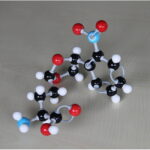Dans les sciences, le chemin est plus important que le but. Les sciences n’ont pas de fin.
Erwin Chargaff

Johann HENDRICKX
Ingénieur d'études CNRS
BAP A
| Équipe : |
Thèmes de recherche
- Modélisation moléculaire
- bioinformatique
- biochimie structurale
Projets
Parcours universitaire
2019: Thèse de doctorat bioinformatique-structurale (Nantes): Développement méthodologique pour l’étude des phénomènes d’interaction protéine-glucide
2007: Master professionnel Biologie – Santé: Métrologies chimique et physique & chimiométrie (Montpellier)
Métrologies chimique et physique & chimiométrie (Montpellier)
Stage de 7 mois chez Merck Sharp & Dohme – Chibret: Recherche et développement d’une méthode de dosage d’un biomarqueur cardiaque
2006: Maitrise IUP Génie Chimique:
Chimie des biomolécules (Montpellier)
Stage de 7 mois au Centre d’Etude et de Valorisation des Algues (CEVA): Synthèse de molécules amphiphiles à partir des ulvanes (polysaccharides sulfatés provenant des parois cellulaires des ulves)
Publications
1 publication
Sucrose phosphorylase from Alteromonas mediterranea: structural insight into the regioselective α-glucosylation of (+)-catechin Article de journal À paraître
Dans: Biochimie, À paraître.
2 publications
Enzymatic synthesis, characterization and molecular docking of a new functionalized polyphenol: Resveratrol-3, 4’-⍺-diglucoside Article de journal
Dans: Results in Chemistry, p. 100956, 2023.
Regioselective glucosylation of (+)-catechin using a new variant of sucrose phosphorylase from Bifidobacterium adolescentis Article de journal
Dans: Organic & Biomolecular Chemistry, vol. 21, no. 11, p. 2307–2311, 2023.
1 publication
Numerous severely twisted N-acetylglucosamine conformations found in the protein databank Article de journal
Dans: Proteins: Structure, Function and Bioinformatics, vol. 88, no. 10, p. 1376–1383, 2020, ISSN: 10970134.
2 publications
Trapping by amylose of the aliphatic chain grafted onto chlorogenic acid: Importance of the graft position Article de journal
Dans: Carbohydrate Polymers, vol. 117, p. 910–916, 2015, ISSN: 01448617.
Design of an α-l-transfucosidase for the synthesis of fucosylated HMOs Article de journal
Dans: Glycobiology, vol. 26, no. 3, p. 261–269, 2015, ISSN: 14602423.
2014
Semi-rational approach for converting a GH1 ß-glycosidase into a ß-transglycosidase Article de journal
Dans: Protein Engineering, Design & Selection, vol. 27, no. 1, p. 13–19, 2014.


